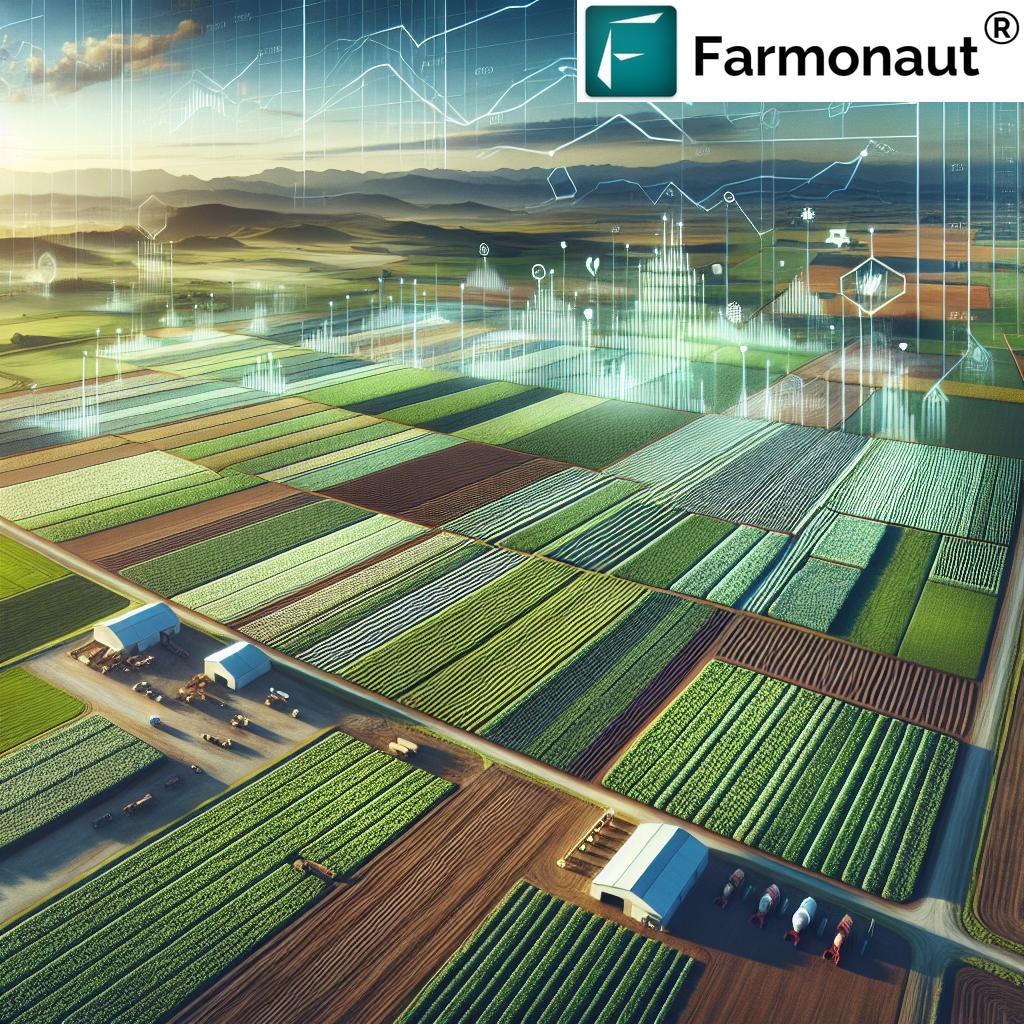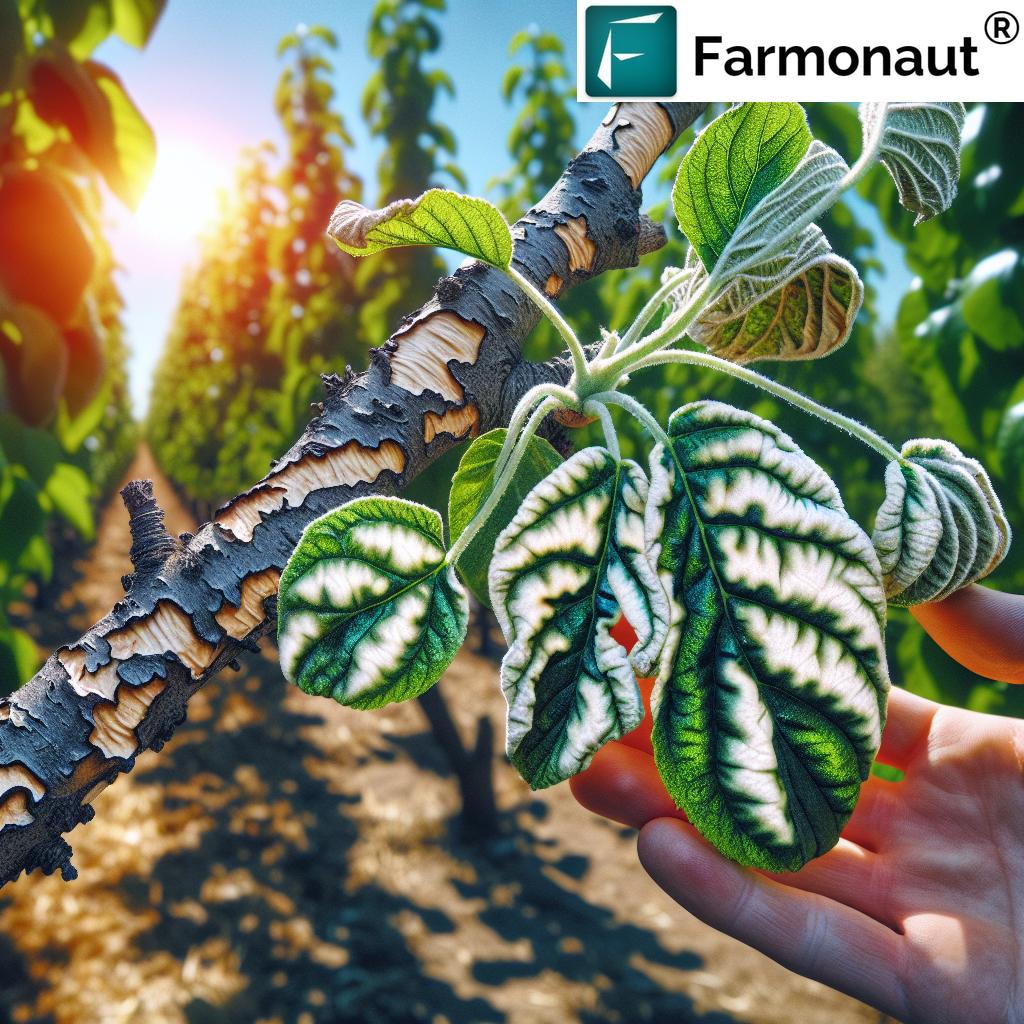Agronomic Soil Testing: Best Rated Agricultural Soil Test for 2025
“Over 80% of top-yield farms in 2025 use digital agronomic soil testing for precise nutrient management.”
Summary: The Importance of Agronomic Soil Testing in Modern Agriculture – A 2025 Perspective
Agronomic soil testing has rapidly evolved as a cornerstone of modern, precision farming. In 2025, with the growing global demand for food and the urgent need to preserve our environmental resources, sustainable agricultural practices are pivotal. By enabling farmers and agronomists to optimize crop productivity, conserve inputs, and nurture long-term soil fertility, digital agricultural soil test methods have moved front and center in global food production strategies.
This article explores the fundamentals, advanced applications, and best-rated soil testers of 2025. We also highlight how digital innovation and platforms like Farmonaut are revolutionizing both large-scale and smallholder farming across the globe.
Understanding Basic Soil Testing: The Foundation
A basic soil test is the most fundamental analytical process for any agriculture land soil test. At its core, it involves analyzing a soil sample to determine:
- Nutrient content (macronutrients and micronutrients)
- pH level (acidity or alkalinity of the soil)
- Texture (percentage of sand, silt, and clay)
- Presence of contaminants (heavy metals, pesticides, etc.)
Agricultural basic soil tests typically measure the main macronutrients plants need, known as NPK – nitrogen (N), phosphorus (P), and potassium (K). Tests may also reveal secondary nutrients (such as calcium, magnesium, and sulfur) and vital micronutrients (like iron, zinc, copper, manganese, and boron) needed in smaller amounts but essential for growth.
This simple yet powerful process provides critical data for informed decisions on fertilization strategies, crop rotation, and land management. By testing different areas of a field, farmers and agronomists can spot variations, identify deficiencies, and develop precise, site-specific management strategies, a hallmark of the best rated agronomic soil testing practice in 2025.

Download on Android

Download on iOS
Agricultural Soil Testing: A Cornerstone of Productivity
Agricultural soil testing moves beyond the basic to integrate advanced laboratory analysis and digital tools for a comprehensive view of soil fertility. As of 2025, this involves both:
- Conventional laboratory methods (wet chemistry, extraction, spectrometry etc.)
- On-site digital sensors and rapid NIRS (near-infrared spectroscopy) analysis
- DNA-based microbial assessments for mapping living soil biodiversity
Such agronomic soil testing enables:
- Identification of nutrient deficiencies and toxicity risks
- Assessment of soil structure, texture and compaction issues
- Highlighting threats such as salinization, contamination, and pH imbalance
With these insights, precision fertilization is achievable. This minimizes nutrient overuse, which is vital to reducing environmental impacts like runoff and groundwater contamination. By matching “what’s in the soil” with “what the crop needs,” input waste is drastically reduced, and sustainable soil health is supported.
Agricultural soil testing is especially pivotal today in both large-scale and smallholder operations, democratizing access to actionable data and practices for all farmers.
Looking for automated soil monitoring or need programmatic access?
Use the Farmonaut Satellite Data API for environmental monitoring, or consult our Developer API Docs for integration ideas.
Core Steps in Agronomic Soil Testing – The 2025 Methodology
-
Soil Sampling:
- Sample soil at multiple locations/depths for representative analysis (standard is 0–15 cm for cropland).
- Clean equipment between samples to avoid cross-contamination.
-
Testing Using the Best Rated Soil Tester:
- Utilize portable digital soil testers, NIRS sensors, or laboratory services for comprehensive analysis.
- Test for pH, electrical conductivity, organic matter, N, P, K, micronutrients, soil moisture, microbial activity, and possible contaminants.
-
Data Analysis & Interpretation:
- Use digital platforms or agronomists’ recommendations to interpret results and diagnose core issues affecting crop yield and soil health.
-
Management Decision-Making:
- Create precise, field-specific fertilization, irrigation, crop rotation, or amendment plans based on findings.
- Deploy adjustment over time as further monitoring reveals changing conditions.
-
Integration with Digital Solutions:
- Automated data collection via IoT/probes, satellite insights (for cover/texture), and app-based records streamline the process.
Assessing Agriculture Land Soil Test Results: Actionable Insights for Management
Interpreting a modern agriculture land soil test result involves several critical parameters, each influencing plant health and yield in unique ways. Here are some fundamental points for 2025 and beyond:
-
pH Level:
Affects nutrient availability (e.g., low pH can “lock out” phosphorus); most crops prefer pH 6.0–7.5. Amend with lime or sulfur-based on soil test. -
Nitrogen (N):
Key for leafy, vegetative growth. Deficiency limits yield, while an excess can cause environmental runoff. -
Phosphorus (P):
Vital for root and fruit development. Deficiency is common in acidic soils. -
Potassium (K):
Regulates water use and improves disease resistance. -
Secondary Nutrients:
(Calcium, magnesium, sulfur) – shape soil structure and support core plant physiology. -
Micronutrients:
(Boron, zinc, copper, others) – low levels can dramatically affect certain crops. -
Soil Texture:
(Sand, silt, clay proportion)% – guides irrigation and drainage; affects how quickly nutrients leach or get retained. -
Organic Matter and Microbial Activity:
Supports sustainable soil health and resilience under intensive agriculture.
Modern digital soil test apps and platforms provide field-specific, real-time interpretations and action plans, empowering even smallholders with AI-powered insights for yield optimization and cost-reduction. For instance, our Farmonaut platform leverages satellite, AI, and mobile data so users can visually track changes, receive recommendations, and support better fertilizer, irrigation, and crop selection decisions.
“Best-rated soil testers in 2025 analyze up to 15 soil parameters in under 10 minutes using advanced digital sensors.”
Choosing the Best Rated Soil Tester in 2025: What Matters Most?
The demand for rapid, accurate soil testing has driven an innovation surge in both portable sensors and automated laboratory integrations. The best rated soil testers of 2025 share several critical features:
- On-site Analysis: Hand-held NIRS and sensor-based devices provide immediate, multi-parameter testing, bypassing lengthy lab queues.
- Comprehensive Parameters: Ability to measure basic NPK, micronutrients, pH, moisture, organic matter, CEC, salinity, heavy metals, and biological activity.
- Speed and Convenience: Digital testers deliver actionable data in minutes (< 10 min typical).
- Integration: Sync data with farm management apps, IoT networks, or API for continuous monitoring and advanced analysis.
- Cost-Effectiveness: Reduce costs by minimizing unnecessary fertilizer application and repeated sampling.
The integration of the Internet of Things (IoT) facilitates dynamic soil health monitoring and triggers early warnings for stress or nutrient deficiency. This approach enables sustainable management, improved yield, and cost efficiency across the board.
Explore Farmonaut Fleet Management solutions to supercharge resource scheduling, track devices, and optimize logistics across your entire agricultural operation.
Comparison Table: Top Agricultural Soil Testing Methods & Testers (2025)
| Testing Method / Device | Technology Used | Main Parameters Analyzed | Estimated Accuracy (%) | Time Required | Cost Estimate (USD) | Suitability |
|---|---|---|---|---|---|---|
| Traditional Laboratory Wet Chemistry | Manual (lab-based, reagents) | pH, N, P, K, micronutrients, organic matter | 98–99 | 24–48 hours | 30–75/sample | All scales, research |
| Portable NIRS Analyzer (2025) | Digital (Near-infrared Spectroscopy) | pH, NPK, moisture, organic matter, CEC, micronutrients | 92–97 | 2–10 min | 400–2500 (device) | Farms, extension, consultants |
| IoT Smart Soil Sensor Network | Sensor array + mobile/web dashboard | Moisture, pH, EC, temperature, NPK (in some models) | 90–95 | Real-time | 90–800+ (depending on complexity) | Large farms, research, continuous monitoring |
| Satellite-Based Soil Analysis (e.g., Farmonaut) | Remote sensing (multispectral satellite, AI) | Soil moisture, texture, organic carbon, health indices | 85–92 | Minutes (cloud delivery) | Starts ~$50/month (platform access) | Large farms, region-scale, governments |
| DNA-Based Microbial Assessment | Sequencing analysis (lab) | Microbial diversity, pathogen/beneficials | 96–99 | 48–72 hours | 80–200/sample | Research, advanced soil health |
| Colorimetric Test Strips (DIY) | Manual (chemical reaction) | pH, N, P, K (basic) | 70–80 | 5–15 min | 1–5/test | Home gardens, hobbyists |
All costs/accuracy/timings are typical estimates – consult device specifications or platforms like Farmonaut for updated features.
Farmonaut & Digital Soil Health Monitoring: Enabling Smart, Sustainable Decisions
We at Farmonaut are dedicated to making satellite and AI-driven soil insights affordable and accessible for farms of every scale, governments, and businesses worldwide. Our platform harnesses multispectral satellite imagery, AI models, and cloud-powered dashboards to monitor crop vigor, soil moisture, and key soil parameters across vast and varied agricultural landscapes.
- Real-Time Monitoring: Track soil texture, organic carbon, and vegetation health for any geo-location, directly in our Web, Android, and iOS Apps.
- AI-Based Recommendations: Our Jeevn AI Advisory System gives tailored, site-specific crop and resource strategies, maximizing productivity and reducing waste.
- Environmental Impact: Carbon footprinting and soil quality indicators help users adopt sustainable practices; consult our carbon footprinting tool.
- Blockchain Traceability Integration: Our system enables digital tracking of soil and yield data for end-to-end transparency;see traceability product details.
- Fleet & Resource Management: Monitor and optimize machinery, vehicles, and assets for reduced costs and higher efficiency (Fleet Management details).
Access all core features via web or mobile:

Future Trends in Agronomic Soil Testing: Digital, Smart & Sustainable
By 2025 and beyond, the pace of digital transformation in agronomic soil testing will continue accelerating. The following trends are emerging as game-changers:
-
AI-Driven Analytics:
Predictive models will analyze vast agri-ecosystem datasets—from lab results and IoT sensor feeds to drone imagery—to provide adaptive recommendations and “what-if” scenario planning. -
Remote Sensing Integration:
Satellite and drone images will be further enhanced by AI to estimate parameters like soil organic carbon, texture shifts, moisture, and compaction at local and regional scales. -
Microbial & Carbon Health:
Measuring soil microbial diversity and carbon stocks is increasingly crucial for monitoring sustainability, climate resilience, and eligibility for carbon markets. Explore our carbon footprinting platform for more info. -
Quick-Action Mobile Apps:
Smart apps will convert test results into specific, GPS-guided application maps for fertilizer and irrigation, directly interfacing with variable rate machinery. -
Blockchain Traceability:
Transparency tools will connect soil health, carbon, and yield data directly to supply chains, leveraging secure, blockchain-based records (see Farmonaut Traceability).
The ultimate role of agronomic soil testing is not only to optimize crop yield and reduce input costs—but also to create resilient, resource-efficient, and climate-smart agricultural ecosystems.
Soil Health & Sustainability Support Tools in 2025
- Environmental Compliance: Precision soil testing supports adherence to regional fertilizer bans or environmental guidelines, like played out in the Florida Fertilizer Ban 2025 (YouTube) for Indian River Lagoon.
-
Crop Loans & Risk Management: Ag-finance and insurers increasingly require digital soil test verification for approval and payouts.
Interested? See how Farmonaut Crop Loan and Insurance Verification tools facilitate access to finance. - Scale & Mobile Access: Solutions for small, medium, and large farms—enabled via web, Android, iOS, or direct app download.
Farmonaut Subscriptions: Affordable Access to Digital Soil Data
Farmonaut offers scalable, cost-effective subscription packages for individuals, agribusinesses, research, and government use. Choose a plan that matches your monitoring scope and data update requirements—no complex hardware or installation required!
Explore our Large-scale Farm Management platform for integrated digital agronomy, satellite insights, and team collaboration.
FAQ: Agronomic Soil Testing in 2025
-
Why is agronomic soil testing important in 2025?
It is vital for matching soil nutrient supply with crop demand, reducing input costs, maximizing yield, and improving long-term soil health. Regular soil testing helps meet sustainability and compliance goals, making farming more efficient and resilient to climate impacts. -
What is the difference between a basic soil test and a comprehensive agricultural soil test?
A basic soil test typically evaluates major nutrients and pH, while a comprehensive test includes secondary/micronutrients, organic matter, microbiology, contaminants, soil structure, and more, often using advanced digital/lab methods. Both are essential, but comprehensive tests provide deeper management insight. -
What is the best rated soil tester for farm use in 2025?
Top-rated options include portable NIRS or digital sensors for on-farm use, and cloud-based remote sensing platforms like Farmonaut for large or distributed agriculture. The optimal choice depends on farm size, crops, and analytical needs. -
How often should soil be tested?
Most farms test at least once per season (pre-planting). High-value crops or precision programs may test before and after application, with continuous IoT/satellite monitoring for large operations. -
How do digital soil tests integrate with other farm management tools?
Digital soil test data can be automatically synced into farm management apps for variable-rate input mapping, irrigation planning, satellite crop vigor overlays, and automated traceability records for sustainability certification. -
Can soil testing help reduce environmental impact?
Absolutely. Precision management minimizes overuse of fertilizers—preventing waterway pollution, reducing fertilizer costs, and promoting balanced, sustainable soil ecosystems. -
Is Farmonaut a soil tester manufacturer or regulatory body?
No, Farmonaut provides advanced satellite-based digital monitoring, AI advisory, and resource management for soil health and crop productivity—but does not manufacture hardware testers, farm inputs, or regulate farming practices. -
How do I access Farmonaut’s soil monitoring and test advisory features?
Sign up or log in through our Web/Android/iOS Apps or via API endpoints. Choose the service package that fits your needs and start monitoring your agricultural land soil data today.
Conclusion: Shaping the Future of Agriculture with Superior Soil Testing
Agronomic soil testing remains essential to the transformation of global agriculture. By systematically quantifying soil health, nutrient status, and biological activity, the best rated soil testers and advanced digital methods in 2025 are enabling both small and large farmers to reduce costs, improve yield, and ensure sustainable soil management.
Platforms like Farmonaut—by integrating real-time satellite data, AI, and blockchain—bring actionable insights, environmental compliance, and resource traceability to every user, from the field to the cloud.
In this era of rising demand for food and climate challenges, it is clear: regular, science-based, digital soil testing is not an option, but a necessity for productive, sustainable, and future-ready farming.
Ready to take your soil health monitoring into the digital future?
Start with Farmonaut today and build the foundation for resilient, productive, sustainable agriculture in 2025 and beyond.









